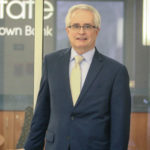As Todd Langenfeld, president of Farmers Trust & Savings Bank in Earling, Iowa, followed the legislative wrangling over tax reform during November and December, he said he “felt like a ping pong ball, going back and forth on remaining a sub-S bank.” Langenfeld engaged in multiple conversations with the bank’s Chief Executive Officer Roger Kenkel about the possibility of converting the bank to a C-corp. “Under the new law, the highest marginal effective rate comes in right at 30 percent with the 20 percent passive income exemption,” Langenfeld said. “Under C-corp tax laws, I would be under a 41 percent effective rate — the 21 percent corporate rate plus the 20 percent dividend rate. I know this is an over-simplification but I am good at math and 30 percent is better than 41 percent.” [Continue]






